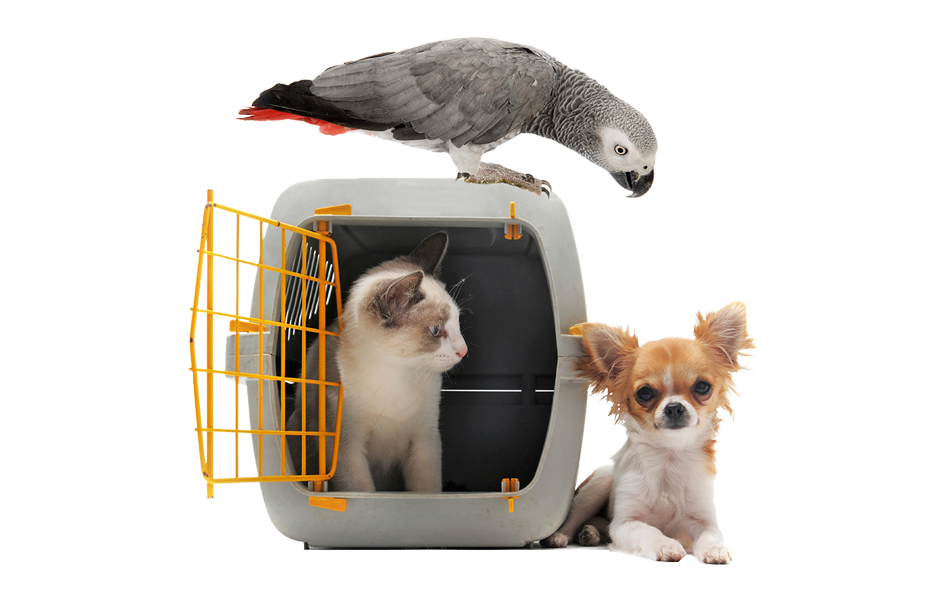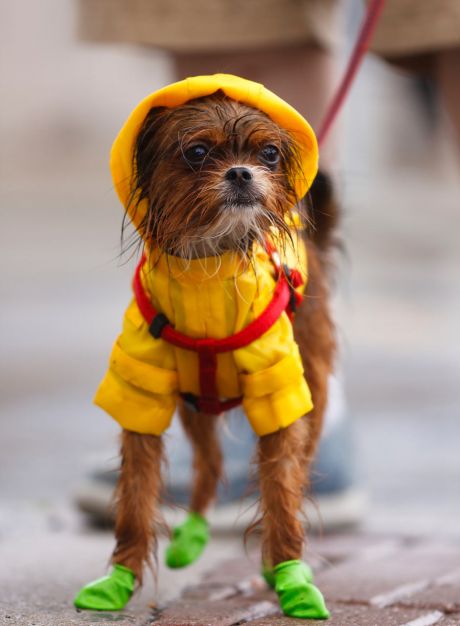Taking Care of Pets During a Hurricane
Make sure your hurricane disaster plan includes the family pet. In the event of a catastrophe, they are unlikely to survive on their own.
Not planning in advance could mean that you and your family must scramble to find shelters that accept pets. or you may find that you've left an important necessity behind. Please take a moment to read these helpful tips on creating a disaster plan for your pet to ensure every family member is protected.

Have a Disaster Plan
- Plan in advance where you will go and how you will get there.
- Map out your primary route and a backup route in case roads are blocked or impassable.
- Specialized pet shelters, animal control shelters, veterinary clinics, and friends and relatives living in areas located out of harms way are ALL potential refuges for your pet during a disaster. Many emergency shelters do not accept household pets for public health reasons, so it is important to research and identify pet-friendly shelters in advance. Your countys Emergency Management Web page will provide you with a list of shelters and, in most cases, will identify those shelters that accept pets.
- Talk to your vet, the humane society or the local emergency management agency for information regarding community evacuation plans that include pets.
- Animals brought to a pet shelter are required to have: Proper identification collar and rabies tag, proper identification on all belongings, a carrier or cage, a leash, an ample supply of food, water and food bowls, any necessary medications, specific care instructions and news papers or trash bags for clean-up.
- Make advance arrangements to have a friend or neighbor pick up your pets in the event you are not at home when a disaster strikes. Plan where you will meet or how you will reach each other.
Make a Disaster Kit for Your Pets
- Medication and medical records (including proof of rabies vaccination) in a waterproof container; pet shelters may require proof of vaccines.
- Pet first aid kit, leashes, harnesses, crates and carriers for transporting pets - carriers should be large enough for the animal to stand and turn around.
- A muzzle, if your pet requires one.
- Food and water for at least three days and a manual can opener.
- Cat litter and litter box.
- Toys.
- Recent photo of you and your pet in case you become separated.
- Name and phone number of your veterinarian.
- If you have pet insurance, the insurance company contact information and policy number.
If You Must Evacuate, Take Your Pets

- Be prepared to leave early; do not wait for an official evacuation as you might be ordered to leave your pets behind.
- Keep pets on leashes or in carriers at all times. Birds should be transported in a secure travel cage or carrier.
- Make sure your pet is wearing up-to-date identification. Include the phone number of a friend or relative outside your area in case your pet gets lost and you cannot be reached. Also, mark the crate or carrier with similar information.
Returning Home After The Storm
- Once you return to your home, do not allow your pets to roam loose right away. While you assess the damage, keep dogs on a leash and other animals in their carriers.
- Familiar landmarks and smells might be gone, and your pet may become disoriented. Pets can easily get lost in such situations, so give them some time to get used to their surroundings.
- After a disaster animals can become aggressive or defensive - monitor their behavior.








